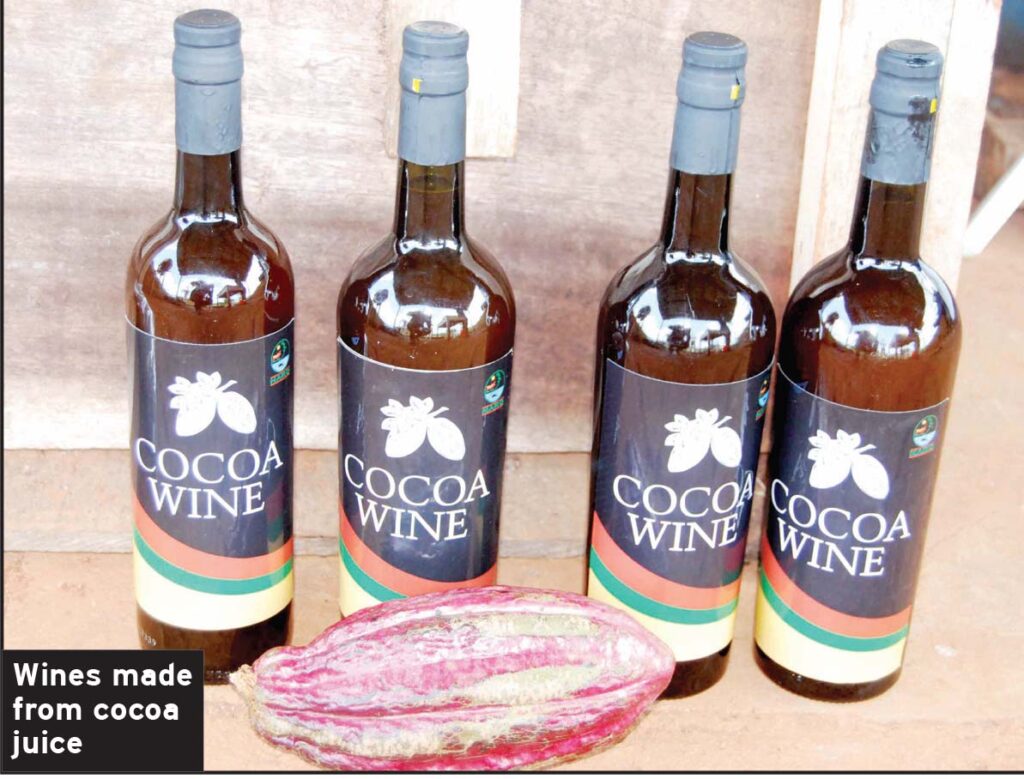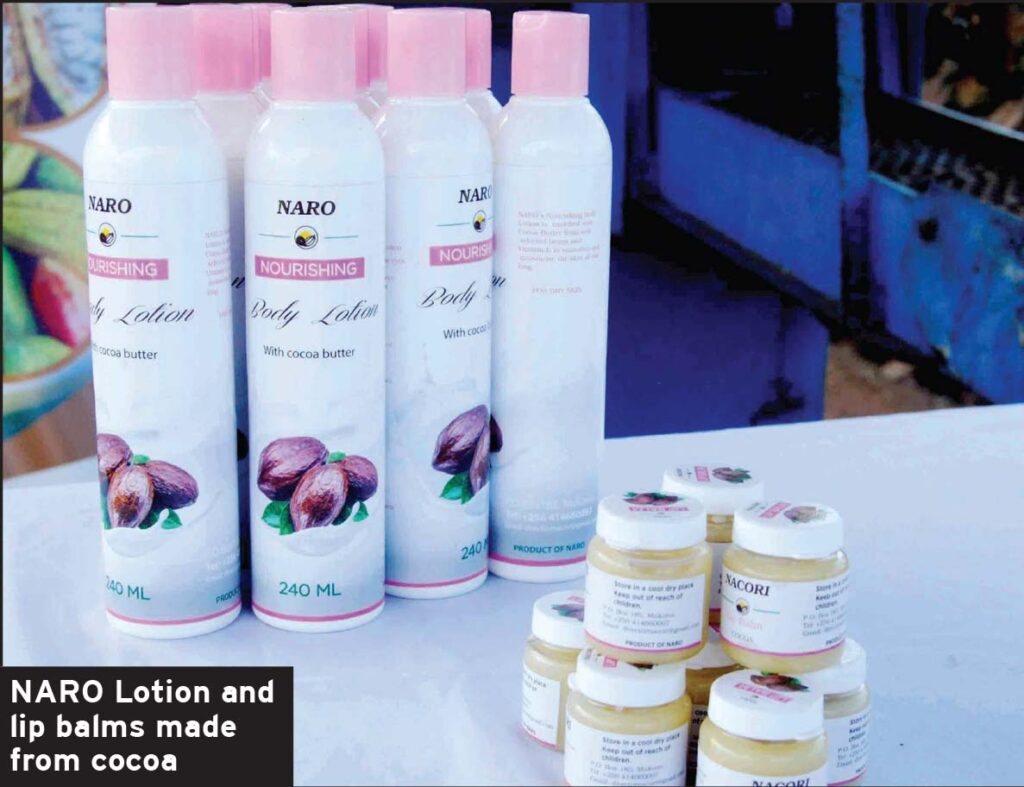The New Vision is profiling innovations, discoveries and inventions from Uganda, which have benefited the citizens and people beyond. This is in commemoration of the 60 years of independence on October 9th. Today, Herbert Musoke writes about the improved processing methods that can increase products and product quality from cocoa production
The National Agricultural Research Organisation (NARO) is currently engaged in market-oriented research that can spur agro-industrialisation.
Through NARO’s arm, the National Coffee Research Institute (NaCORI), researchers have come up with a number of innovations aimed at producing products that will fetch more money.
Joseph Mulindwa, a researcher at NaCORI, says one of the researches is on cocoa, which is grown in Bundibugyo, Jinja, Buikwe, Masindi and Mayuge districts.
Others are Iganga, Arua, Adjumani, Moyo, Koboko and Luwero. There is also Mukono, Wasiko, Hoima, Kibale and Mpigi. The production of cocoa beans in Uganda increased from 145 tonnes in 1971 to 35,000 tonnes in 2020, which is an average annual rate of 18.92%. Unfortunately, most farmers sell dry beans for export. There are few factories processing cocoa into finished products.
Henry Lwanga, a retired agricultural officer and a renowned cocoa farmer at Mindi village in Kasawo sub-county, Mukono district, says cocoa beans are still the source of commercial cocoa.
NARO wants Uganda to start exporting the four intermediate cocoa products — cocoa liquor, cocoa butter (cocoa cake and powder) and chocolate.
Lwanga has been growing cocoa since 1985. He says that, although chocolate is the largest consumer of cocoa beans, intermediate products, such as cocoa powder and cocoa butter, are important.
Cocoa powder is essentially used as flavour in cakes, biscuits, ice cream, dairy drinks (beverage industry) and in the manufacture of coatings for confectioners or frozen desserts.
Besides the traditional uses, it can also be used in the manufacture of tobacco, soap and cosmetics. It is also a traditional remedy for burns, cough, dry lips, fever, malaria, rheumatism, snakebites and wounds. It is reported to be an antiseptic.
Fermentation innovation
Researchers at NaCORI have come up with a number of innovations, including the fermentation technology. The fresh cocoa seeds are coated in a white membrane that quickly turns brown as fermentation occurs after harvesting.
Farmers pour the fresh beans into boxes set as steps, through which they interchange the beans from the upper box to the lowest every after two days.
They use a spade or rake to scoop the beans from one box to the other, which is tiresome and labour-intensive. It also takes about 10 days since beans are turned every after two days for the fermentation process to complete. This helps to attain full fermentation uniformity, which is important to increase the aroma and flavour.
The conversion is caused by the yeasts in the air and by the heat produced by the pile and acid that act as precursors for fermentation. However, NARO has invented another user-friendly, quicker and equally effective method.
“We have developed a new method that uses a small and simple box, which is user-friendly to the young, the old and persons with disabilities. The box is made with a haft knob that is easy to turn the beans for even fermentation in just four days only. And a box can take 50-70kg,” Mulindwa explains.
Wine distilling
Mulindwa also says NARO has innovated a system of distilling wine from cocoa seeds.
This cocoa juice is wealth that farmers have been losing because, with the ordinary methods, the juice is not harvested. Farmers do not know how to collect the wine from cocoa seeds.

Mulindwa says now farmers can collect wine from their seeds.
“Juice is collected right after removing cocoa seeds from the pods using a stainless steel food grade machine that squeezes the juice from the seeds. You should collect 20% of the total weight of the fresh beans poured into the machine. For example, if you put in 60kg, you collect 12 litres,” he says.
To get quality juice, it should be squeezed from freshly opened pods that are free from any diseases and should be opened in a clean place. This juice can be used to make fresh juices, wines and for brewing waragi.
Making cosmetics
Cosmetics, especially lotions, lip balms, among others, can be extracted from dry beans.
According to Mulindwa, cosmetics can be made from extracts from dried beans because they have 50% butter content needed in lotions and lip balms. These are among the most expensive cosmetics on the market world over.
According to NaCORI research, if a farmer can harvest between 270 and 450 litres of juice and sell a litre at sh2,000, it will bring an income of between sh540,000 and sh900,000 from just the juice, before adding the income from dried cocoa beans.
“If you make wine and sell each 300ml bottle at sh10,000, it means you will earn sh30,000. That gives a farmer between sh9m-sh15m in a season,” Mulindwa says.

Cocoa investment
Cocoa is ranked among the high-value export commodities that offer great economic opportunities for increasing farmers’ incomes and foreign exchange for the country.
Statistics show that the production of cocoa and export earnings from the commodity have been steadily increasing. The National Agriculture Advisory Services (NAADS) has been supporting the cocoa development programme by availing planting materials to farmers, as well as support to post-harvest handling facilities.
Since 2013, NAADS has distributed over 20 million cocoa seedlings, contributing to increased production of cocoa by 9%. NAADS is a statutory body under the Ministry of Agriculture, Animal Industry and Fisheries, mandated to manage the distribution of agricultural inputs to farmers for sustainable household food security and incomes.
Cocoa is now Uganda’s fourth-biggest commodity export after coffee, tea and fish. Its production has seen a steady increase over the last few years.
Uganda has a suitable climate for cocoa production. It thrives in rainy tropical areas, with a maximum annual average of 30ºC–32ºC, and annual rainfall between 1,500mm to 2,000mm. Unlike coffee, cocoa can be harvested anytime.





